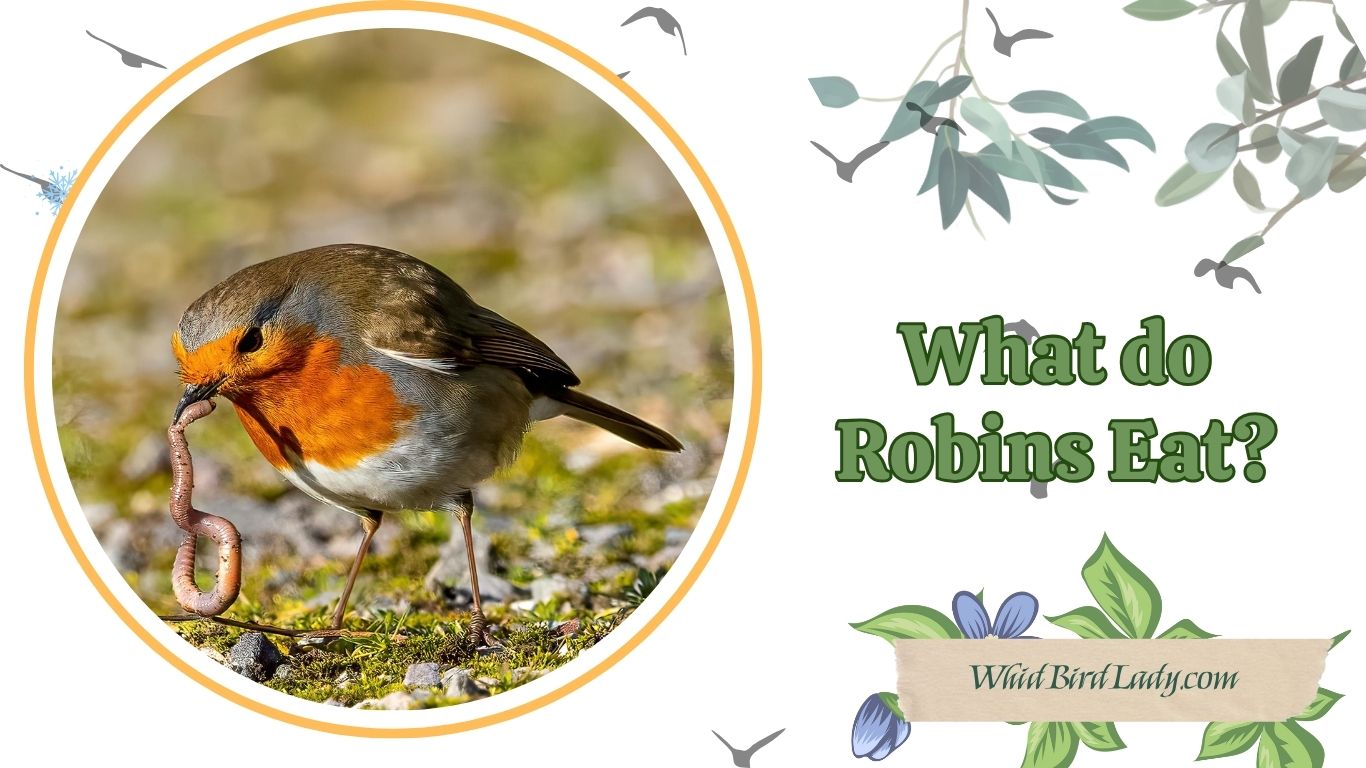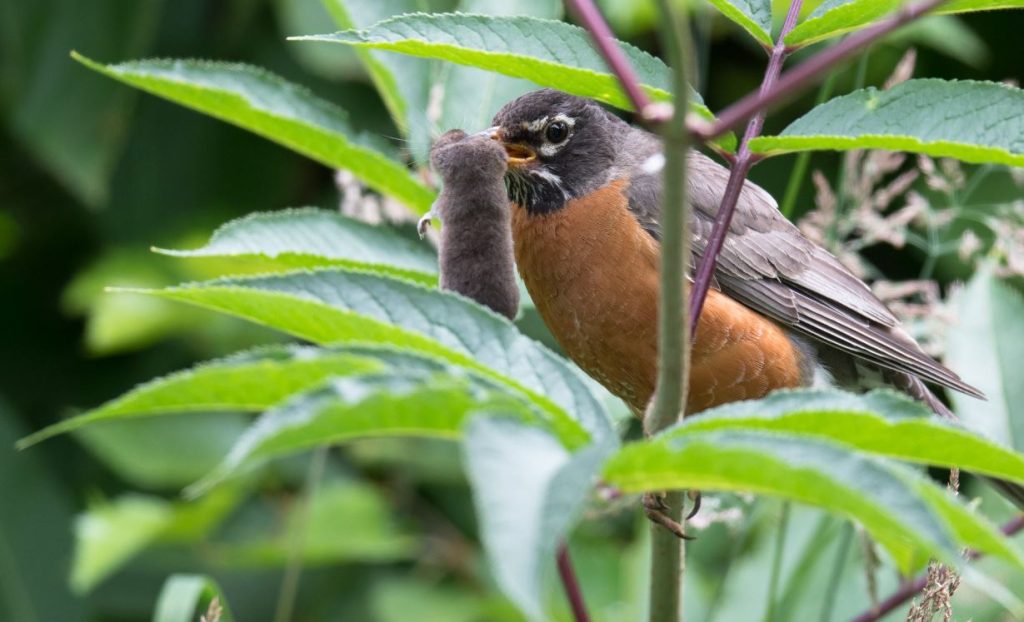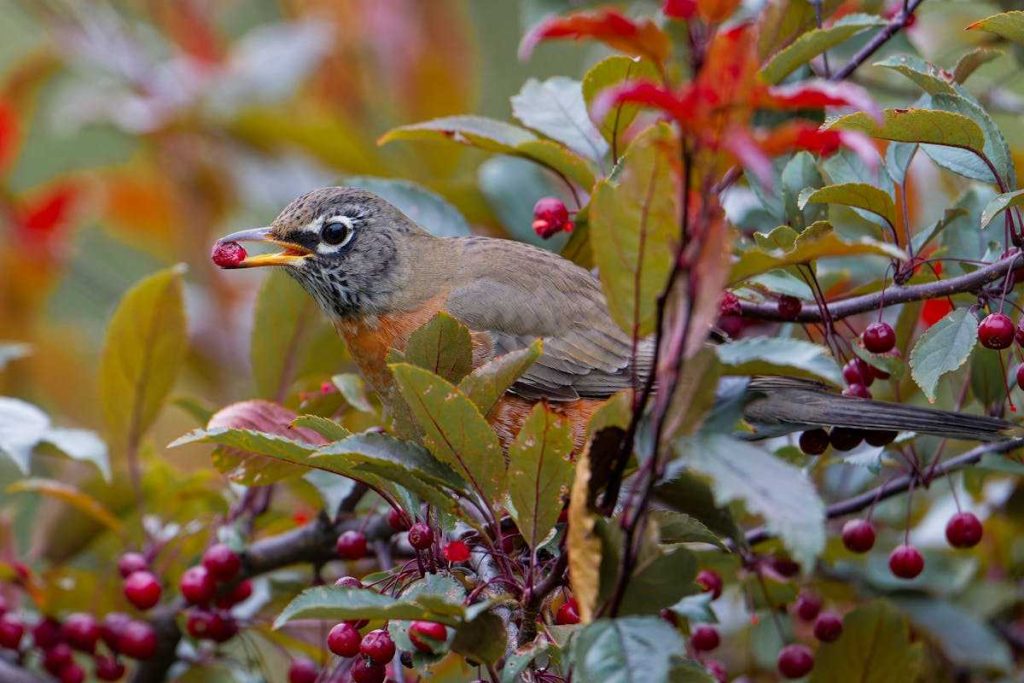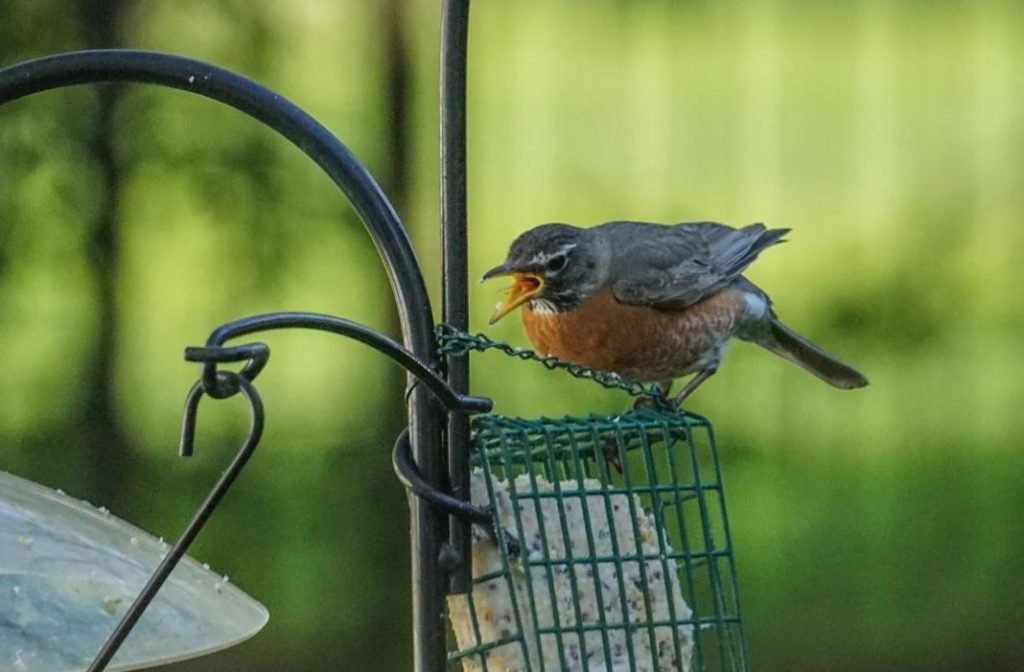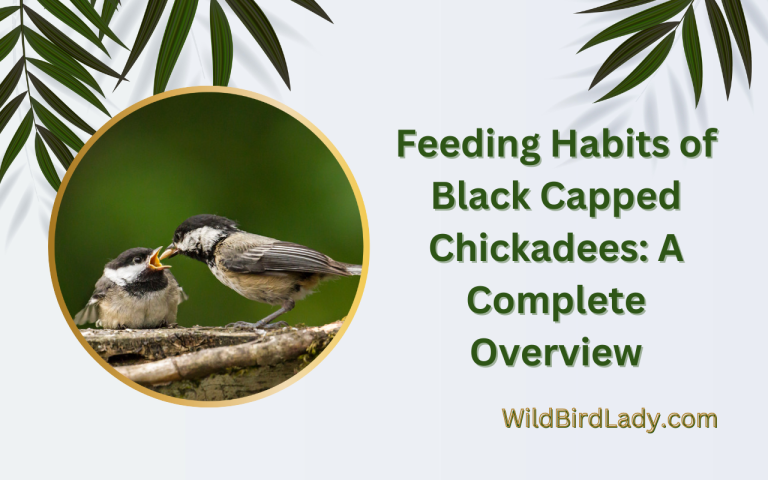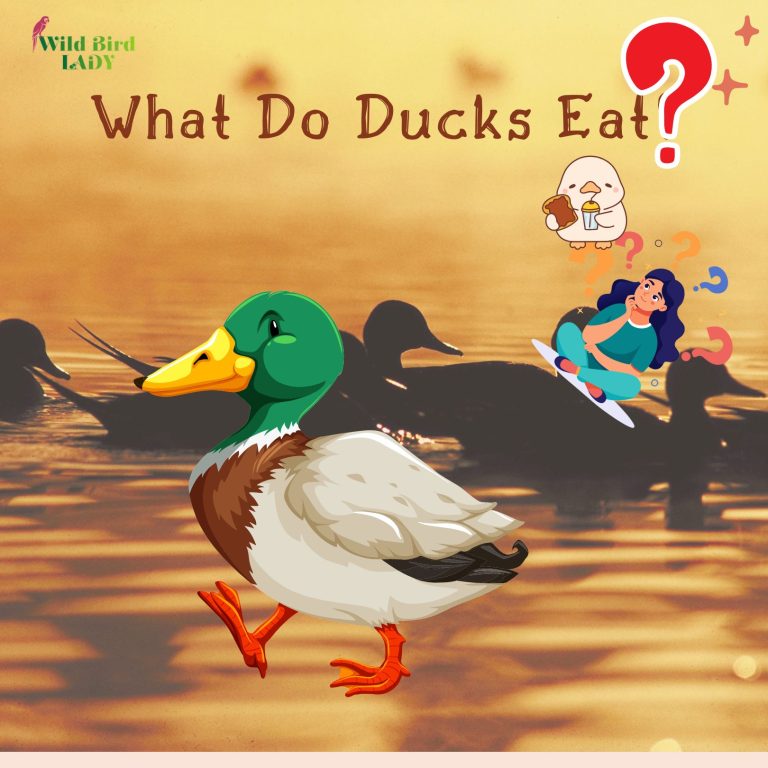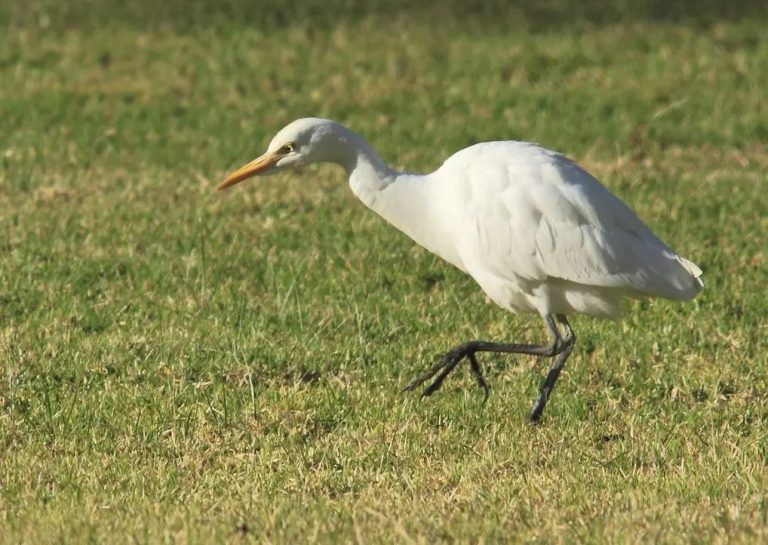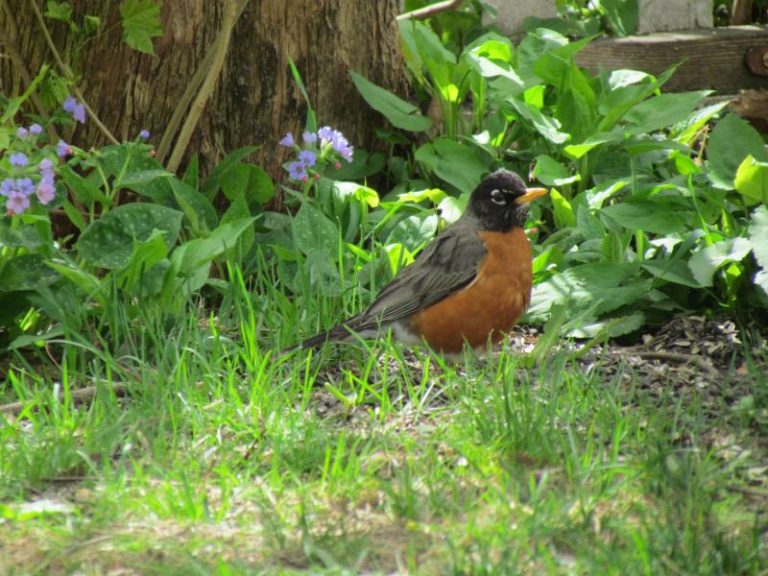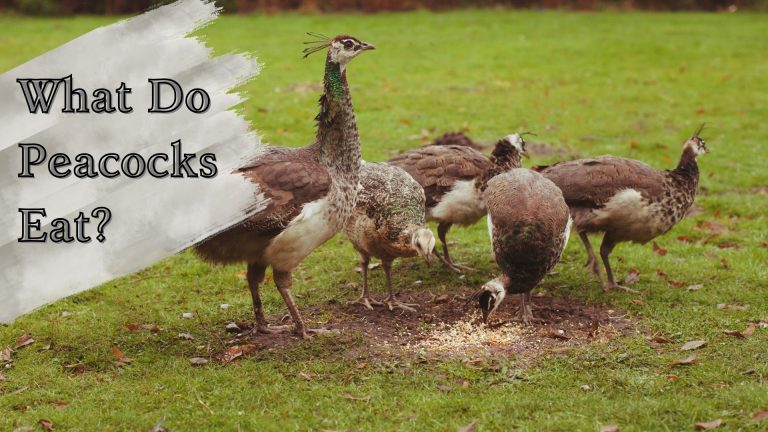What Do Robins Eat? 7 Foods That Keep Them Coming Back to Your Garden
As someone who has spent over 13 years observing birds in the field and my own backyard, I can confidently say that robins are some of the most charming visitors a garden can have. With their bright orange breasts, cheerful songs, and energetic hopping, American robins are not just a sign of spring—they’re a joy to watch year-round.
But if you’re hoping to attract them consistently, you need to understand one key thing: what do robins eat?
Let’s explore the 7 foods robins love most and how you can offer them in your garden.
What Do Robins Eat in the Wild?
Robins are omnivores with a varied diet that shifts with the seasons. According to the Cornell Lab of Ornithology’s All About Birds, their diet is about 60% fruits and berries and 40% invertebrates like insects, worms, and snails.
In spring and summer, robins feast on protein-rich prey to support breeding and raising chicks. In fall and winter, fruits and berries become essential fuel.
So if you’re thinking of robins as simple “worm eaters,” think again—their menu is far more diverse!
7 Favorite Robin Foods That Keep Them Coming Back
1. Earthworms (Their All-Time Favorite)
If you’ve seen a robin yanking a worm from the lawn, you’ve witnessed their classic feeding behavior. Robins hunt by sight, cocking their head to listen for underground movement. Moist soil or a freshly watered lawn can bring worms to the surface—and robins right to your yard.
🐛 Tip: Avoid using pesticides or herbicides that can harm soil life—healthy dirt = more worms = more robins.
2. Berries (Especially Native Varieties)
Robins love berries, especially in late summer and fall when insects become scarcer. Favorites include:
- Elderberries
- Serviceberries (Juneberries)
- Dogwood berries
- Mulberries
- Holly berries (in moderation)
Native shrubs not only provide natural robin food, but they also offer shelter and nesting spots.
🫐 “Planting native fruiting plants is one of the most effective ways to support robins year-round,” says the Cornell Lab of Ornithology.
3. Mealworms (Live or Dried)
Mealworms are a great supplemental food, especially during nesting season. Live ones are preferred, but dried mealworms soaked in water can work too.
🐤 Best Use: Place mealworms in a low tray or platform feeder near the ground to mimic their natural foraging habits.
4. Chopped Fruits (Apples, Berries, Grapes)
Robins will happily feed on fruit scraps you provide—especially during winter when natural food is scarce.
Try offering:
- Apple slices (no seeds)
- Halved grapes
- Raisins soaked in water
- Blueberries or cranberries
🍎 Tip: Keep feeders clean to prevent mold and bacteria from harming the birds.
5. Insects (Beetles, Caterpillars, Grasshoppers)
During the breeding season, robins become serious insect hunters. Protein is essential for their fast-growing chicks.
While you can’t control every insect in your yard, you can support natural insect populations by:
- Reducing pesticide use
- Growing native plants
- Leaving some leaf litter for overwintering bugs
🐞 Healthy, chemical-free gardens are robin buffets in spring.
6. Snails and Small Invertebrates
Robins will also feed on soft-bodied invertebrates like snails, slugs, and spiders. These are abundant in damp, shady gardens—another reason to skip the chemical treatments.
🐌 Tip: Create microhabitats (like a shaded rock pile or leaf pile) to invite these critters—and robin visitors.
7. Suet (in Cold Weather)
While not a staple, robins will eat suet in winter when their usual food sources are limited. Mix suet with fruit bits or mealworms for an extra boost.
❄️ Important: Use no-melt suet in warmer months and keep it out of direct sunlight to prevent spoilage.
Robin Diet by Season: How Their Food Choices Change
Robins are highly adaptable and opportunistic eaters. Their diet shifts dramatically throughout the year based on what’s available—and what their bodies need.
As a birdwatching enthusiast with 13+ years in the field, I’ve found that paying attention to seasonal diet patterns is key to attracting robins all year round.
Spring: Protein for Breeding Season
Spring is all about nesting and raising chicks, so robins ramp up their intake of protein.
- Main foods: Earthworms, insects (beetles, grasshoppers, caterpillars), snails
- Why? Protein supports egg development and provides essential nutrients for baby robins.
- Tip: Water your lawn early in the day to draw worms to the surface.
Summer: Still Insect-Focused with Some Fruit
Summer is a transitional time. Adults still hunt for bugs, especially when feeding fledglings, but begin eating more fruit.
- Main foods: Grasshoppers, spiders, beetles, mulberries, serviceberries
- Tip: Plant fruiting bushes like elderberry or dogwood near your garden’s edge.
Fall: Berries, Berries, Berries
As insect populations dwindle, robins switch to a high-energy fruit-based diet to prepare for migration or winter.
- Main foods: Berries from shrubs like chokecherry, hawthorn, viburnum
- Why? Fruits are high in sugar and help robins store fat.
- Tip: Don’t trim berry-producing bushes too early—robins rely on them.
Winter: Fruits and Supplemented Foods
In colder areas, robins may migrate, but some overwinter where food is available. Since worms and insects are scarce, they rely heavily on fruit and supplemented foods.
- Tip: Offer chopped fruit or suet on a flat tray to help overwintering robins survive.
- Main foods: Crabapples, holly berries, fermented fruits, soaked raisins, suet
According to All About Birds, robins are partial migrants, meaning some stay put while others travel short distances, depending on local food supplies.
When Do Robins Feed?
Robins are early risers, often feeding just after dawn. If you want to attract them, make sure food is available early in the morning. Unlike many birds, robins don’t usually eat from hanging feeders—they prefer flat surfaces or ground-level trays.
What Not to Feed Robins
Some foods can harm robins. Avoid offering:
- Bread (low in nutrients)
- Salty or seasoned foods
- Citrus fruits
- Fruit with pits or seeds (like cherries or apples, which contain small amounts of cyanide)
How to Make Your Garden Robin-Friendly
Even if you offer the best food, robins won’t stick around unless your yard provides what they truly need: a safe, natural habitat. Think beyond feeders—robins are ground foragers and low-nesting birds that rely on a well-balanced ecosystem.
Here’s how to transform your garden into a robin magnet:
1. Provide Clean, Shallow Water
Robins love water—not just for drinking, but also for bathing. Clean feathers help them stay warm, fly efficiently, and avoid parasites.
- Use a shallow birdbath (no more than 2 inches deep).
- Change water daily, especially in summer.
- Place the bath in an open but shaded area so robins feel safe while bathing.
- In winter, use a heated birdbath or a small outdoor-safe water heater.
🐦 Pro tip: Robins are also drawn to drippers, misters, or small fountains that mimic the sound of running water.
2. Grow Native Plants
Native plants are essential for robins because they:
- Attract native insects—a key protein source.
- Produce fruits and berries—especially in fall and winter.
- Provide shelter and potential nesting spots.
Ideal native shrubs and trees for robins include:
- Serviceberry (Amelanchier)
- Eastern red cedar
- Dogwood
- Elderberry
- Hawthorn
- Viburnum
🍃 “Planting native fruit-bearing shrubs is one of the best ways to support songbirds like the American Robin year-round,” according to the Cornell Lab of Ornithology.
3. Keep a Natural, Chemical-Free Lawn
Robins forage on the ground, often pulling up worms, insects, and snails. That means the health of your soil directly affects their food supply.
Avoid:
- Pesticides and herbicides (they kill bugs robins eat)
- Synthetic fertilizers (which disrupt soil organisms)
Instead:
- Embrace organic gardening methods
- Leave patches of lawn a little messy—perfect for foraging
- Water the lawn in early morning to bring earthworms to the surface
4. Add Mulch, Leaf Litter, or Brush Piles
Natural debris may look untidy, but to robins, it’s a buffet. Mulch and leaf litter harbor:
- Beetles
- Caterpillars
- Spiders
- Worms
You can also place small brush piles in the corner of your yard. These create moist, shady areas rich in invertebrates and provide extra cover from predators.
🪱 In my own experience, I’ve seen robins hop through mulch beds daily—tossing leaves aside with their beaks to hunt hidden insects.
🏡 Consistency Is Key
Robins are creatures of habit. Once they find a yard that offers everything—food, water, shelter—they often return year after year, especially for nesting in spring.
- Keep feeders and water available regularly.
- Avoid sudden habitat changes like over-trimming bushes or removing mulch.
- If you provide what they need, robins may even nest in a nearby tree, shrub, or sheltered ledge.
🌟 “A robin-friendly garden is less about control and more about letting nature work. Loosen up your landscaping a little, and you might gain a pair of robins in return.”
FAQ: What People Ask About Robins and Their Diet
❓ Do robins only eat worms?
No—while worms are a favorite, robins eat a variety of foods including insects, berries, snails, and fruits. Their diet changes seasonally.
❓ Can I feed robins in my yard?
Yes! Offer mealworms, chopped fruit, or soaked raisins on a flat feeder or directly on the ground. Avoid traditional hanging feeders—they don’t usually use them.
❓ Do robins eat birdseed?
Not usually. Robins don’t have strong seed-cracking beaks like finches or cardinals. They prefer soft foods like insects and fruits.
❓ Is it okay to feed robins bread or kitchen scraps?
Avoid it. Bread lacks nutrients and can lead to malnutrition. Stick to natural foods like fruit and mealworms.
❓ What do baby robins eat?
Baby robins eat mostly regurgitated insects and worms provided by their parents. As they grow, they gradually begin to eat soft fruits.
Final Thoughts from the Field
So—what do robins eat? From earthworms and insects to berries and fruit scraps, robins enjoy a diverse and seasonal diet. By understanding their needs and mimicking nature, you can turn your yard into a robin magnet.
As someone who’s observed countless robins nesting, foraging, and raising chicks, I can tell you this: once a robin finds a good food source, they remember. And they come back.
As the Cornell Lab puts it, “The American Robin is one of the most familiar and widespread songbirds in North America—thriving where humans plant lawns and gardens.”
(All About Birds, Cornell Lab of Ornithology)
Feed them well, and they just might make your garden a regular stop—or even a nesting site.
Liked this post? Discover more exciting bird stories at wildbirdlady.com.

